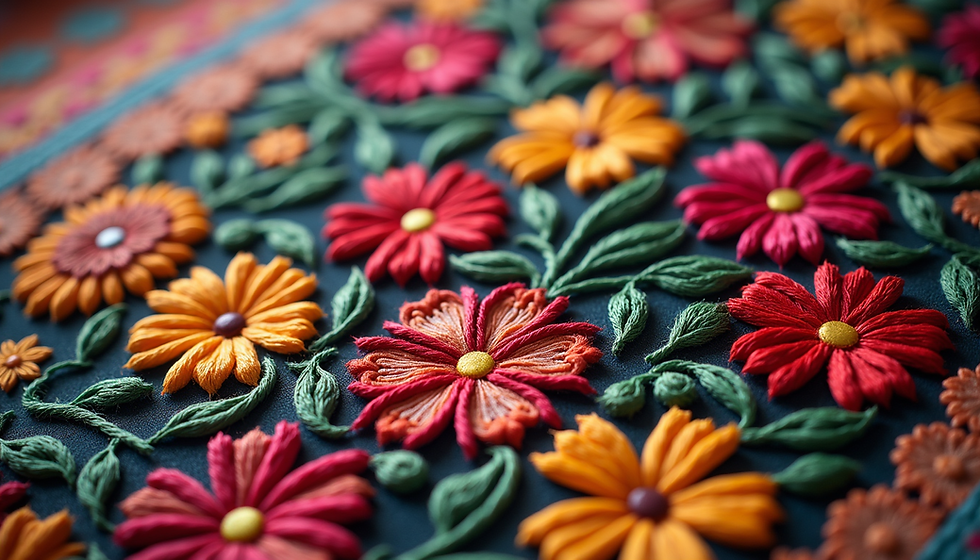- JKAF
- Feb 17, 2022
- 4 min read
The art of producing and designing copperware

Kashmir, a treasure trove of handicrafts heritage and craftsmanship, is known for producing decorative household items made from copper. Copper art, consisting of intricate calligraphic engraving that requires extensive time and labour, locally known as kandkari is believed to be 600-700 years old and introduced to Kashmir by artisans and traders from Iran and Iraq and this handicraft has remained deep-rooted in Kashmiri culture since then. The Islamic scholar from Persia, Mir Sayyid Ali Hamdani, was instrumental in making the art of producing and designing copperware popular among the natives as he according to the historians brought craftsmen from central Asia to train locals in this craft. However, during the reign of Budshah Zain-ul-Abideen, copper art received good support and the ruler helped the people associated with the craft to restore its grandeur. In the Mughal period, metal work in Kashmir was primarily focused on making gun barrels and swords. But by the end of the 19th century as Mughal rule started to decline, the skillful Kashmiri metalworkers got a break from producing war material and started making decorative copperware. The process of making copperware is carried out by many artisans who are specialized in a particular technique. The process involves Khar – the smith, Naqash – the engraver, Zarcod – the gilder, Roshangar – the polisher, and Charakgar – the cleaner or finisher. Copper (Traam in Kashmiri) utensils remain an indispensable part of Kashmiri lives. Be it a wedding or any other auspicious occasion, copper utensils are must haves. Wazwan, the famous multi-course Kashmiri delicacy is unimaginable without copper plates. Especially, when there is an important occasion in the family, the meal has to be served on copper plates, and using other such copper utensils. The Kashmiri copperware is famous all over the world due to its unmatched quality and superior design. Ranging from usual household utensils to ceremonial items, the copperware items hold special importance in Kashmiri culture. Majority of the copper utensils are plain without any ornamentation and are for regular use only. The embellished ones are used on special events and are held as collectibles. The motifs are formed by combination of strategies like repoussé, engraving or chasing and piercing. A unique shape of engraving of geometrical and calligraphic motifs locally referred to as Kandkari, which is a different craft itself is utilized in copperware and practiced by a few smiths even today. The most common motifs used on copperware had been Chinar (maple leaf), Badam (almond or the paisley) and Mehrab (arch). The decorative products include utensils like Lota (pot), Tream (plate), Naer (water jug), Tash-Near (portable handwash), dishes, bowls, trays, vessels, Lamp Shades and many more and the most famous being Kashmiri ‘Samovar’- a traditional tea container or large cattle. The Izband soz, a copper artifact found in every home, is used for burning Izband seeds (harmala, wild rue) on hot coals which produces the smoky fragrance. When a Kashmiri bride leaves her parents’ home, she is gifted the Izband soz by her parents. Tashh naer and traamis are wedding feast staples that no Kashmiri wedding is complete without. Tast-t-Naari is a pair of water serving and holding vessels that are moved around the wedding banquet hall to allow guests to wash their hands before and after meals. Traami, on the other hand, is a large round eating dish that four people can sit around and eat from during a feast. The conical dish that is set on the trami before eating begins is known as sarposh. Since the 19th century, Shehr-e-Khaas or Downtown Srinagar has remained a centre for copperware, with the old markets of Zaina Kadal famous for these local products as well as their settings. Copper samovars, cups, glasses, tasht naaris, traamis, jugs, bowls, trays, and degh (round bottomed cooling pot) decorate the shops of downtown. The copper pottery is left in its natural coppery tone for ornamental purposes. Utensils for everyday use, on the other hand, are polished with a thin layer of gleaming Tin (Kalai Karyen). There was a time when copperware was only associated with utensils, but the copper artists are transforming old techniques into new designs and products ranging from motifs of Valley based shrines to table lamps. Apart from these well-known traditional copperwares, the craftsmen are making ice-cream bowls, flower vases, bathtubs, fountains and other items that find a place in modern homes. The experts opine that copperware craft is unique given its history, and every effort should be taken to protect this age-old tradition of Kashmir. “This craftsmanship is embedded in Kashmiri culture and almost every household has copperware items that show how important this craft is and how people are fond of these items.” They demand for a makeover of this craft for the interests of people associated with this trade. According to government estimates, around 28,000 workers are engaged in around 6000 registered copper units in the valley. Nowadays, people prefer to buy machine made copper utensils which are relatively cheap, ultimately affecting the popularity of this Kashmiri copper art. While the sales only rise during marriage seasons, the number of craftsmen associated with the copperware industry is declining. Youngsters do not want to inherit this craft from their fathers because of low demands and uncertain future. There government should step in to ensure the survival of the copper art and provide all the support that the people associated with the craft deserve. Some schemes should be rolled out at the government level that would enable the stakeholders to reclaim its lost glory.



Comments